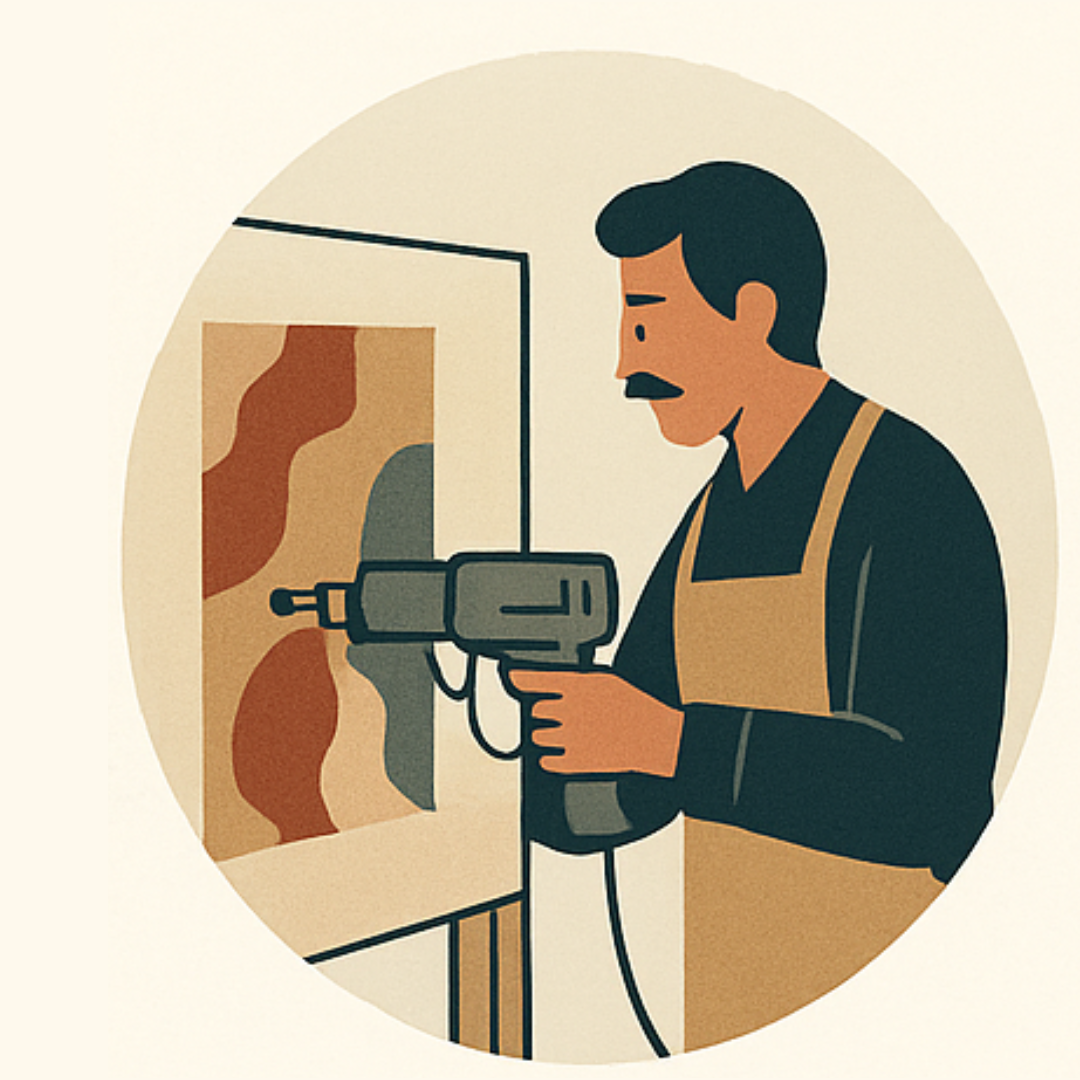Know your Rugs
Hand knotted:
Hand-knotted rugs, also known as Oriental rugs or Persian rugs, are a type of floor covering that is made by hand-tying individual knots onto a woven foundation. This traditional method of rug making results in a highly durable and intricate piece of textile art. Here are some key characteristics and features of hand-knotted rugs:
Handcrafted: Each rug is made by skilled artisans who tie knots by hand to create the rug's pattern and design. This process requires time, patience, and expertise.
Materials: Hand-knotted rugs are often made from natural fibers such as wool, silk, or cotton. The choice of material can impact the rug's texture, appearance, and durability.\
Knotting Technique: The knots are tied around the warp threads (vertical foundation threads) and weft threads (horizontal foundation threads) of the rug. The density of knots and the type of knotting technique used contribute to the rug's quality and intricacy.
Designs and Patterns: Hand-knotted rugs are known for their elaborate and diverse designs. These designs can include floral motifs, geometric patterns, medallions, or pictorial scenes. The design is often a reflection of the rug's cultural or regional origin.
Durability: Due to the labor-intensive process and high-quality materials used, hand-knotted rugs are known for their durability. They can withstand heavy foot traffic and can last for generations if properly cared for.
Value: Hand-knotted rugs are often considered valuable and can appreciate in value over time, especially if they are antique or come from renowned weaving regions.
Variety of Styles: Hand-knotted rugs come in various styles, including Persian, Turkish, Afghan, and many others. Each region has its own weaving traditions and designs.
Unique Characteristics: Since each rug is made by hand, no two hand-knotted rugs are exactly alike. Small variations in color, size, and pattern contribute to the uniqueness of each piece.
While hand-knotted rugs are generally more expensive than machine-made rugs due to the labor-intensive process, they are appreciated for their craftsmanship, beauty, and cultural significance. They are often used as decorative elements in homes, adding warmth, color, and texture to a space.
Hand-tufted:
Hand-tufted rugs are a type of rug construction that involves the use of a tufting gun or needle to punch yarn through a fabric backing. Unlike hand-knotted rugs, which are labor-intensive and time-consuming, hand-tufted rugs are produced more efficiently. Here's a breakdown of the hand-tufting process:
Backing Material: The process begins with a fabric backing material, typically made of cotton.
Design Transfer: The rug's design is often drawn or stenciled onto the backing material. This serves as a guide for the artisan during the tufting process.
Tufting: A tufting gun or needle is used to punch strands of yarn through the backing material. The yarn is threaded through a tufting gun, and the artisan pushes the gun through the fabric, creating loops of yarn on the other side. The loops form the pile of the rug.
Latex Coating: Once the tufting is complete, a layer of latex is applied to the back of the rug to secure the tufted yarn in place and provide stability.
Backing Application: A secondary backing material added to reinforce the rug and improve durability.
Trimming and Finishing: After the latex has dried, the rug is often sheared or trimmed to create an even pile height. This step also enhances the rug's appearance.
Hand-tufted rugs offer several advantages, including a faster production time and a more affordable price compared to hand-knotted rugs.
When shopping for hand-tufted rugs, it's essential to consider factors such as the quality of materials used, the density of the pile, and the craftsmanship to ensure that you're getting a rug that meets your expectations in terms of both aesthetics and durability.
Hand loom:
Handloom rugs are rugs that are woven on traditional hand-operated looms, as opposed to being produced using automated machinery. The process of creating handloom rugs involves the interlacing of warp (lengthwise threads) and weft (crosswise threads) by hand. This manual weaving technique allows for greater precision and control over the design and texture of the rug.
Key characteristics of handloom rugs include:
Handcrafted: Each rug is created by skilled artisans who manually operate the loom, paying close attention to detail and ensuring a high level of craftsmanship.
Unique Designs: Handloom rugs often feature unique patterns and designs, as the weaver has the flexibility to make creative decisions during the weaving process. This results in one-of-a-kind pieces.
Natural Materials: Traditional handloom rugs are often made from natural fibers such as wool, cotton, jute, or silk. These materials contribute to the rug's durability and texture.
Time-Intensive: Handloom weaving is a time-consuming process, and producing a single rug can take a considerable amount of time, depending on the size, complexity of the design, and the skill of the weaver.
Cultural Significance: Many handloom rugs are deeply rooted in cultural traditions, with specific weaving techniques and designs passed down through generations. They often reflect the heritage and history of the region where they are produced.
Handloom rugs are appreciated for their craftsmanship, quality, and the individualized touch that comes with manual production. They are often sought after by those who value handmade, sustainable, and ethically produced textiles. Additionally, the imperfections inherent in handcrafted items contribute to the charm and character of each rug.
Flatweave:
Flatweave rugs are a type of rug that is woven on a loom rather than being knotted. Unlike pile rugs, which have a raised surface created by loops of yarn, flatweave rugs have a flat, thin profile. These rugs are constructed by interlocking warp (vertical) and weft (horizontal) threads, creating a tight and durable weave.
Flatweave rugs are known for their versatility, lightweight nature, and often reversible design. They can be made from various materials, such as cotton, wool, jute, or synthetic fibers. The absence of a pile makes them easier to clean and maintain, and their flat surface is well-suited for high-traffic areas. Additionally, these rugs are popular for their modern and casual aesthetic.
Common types of flatweave rugs include kilims, dhurries, and tapestries. Kilims are traditional flatweave rugs with geometric patterns, often associated with Turkish, Persian, or Central Asian cultures. Dhurries, on the other hand, are Indian flatweave rugs that come in a variety of colors and patterns. Tapestries can also fall into the category of flatweave rugs, featuring intricate designs and sometimes serving both decorative and functional purposes.
Overall, flatweave rugs offer a practical and stylish flooring solution for various spaces within a home or other environments.

Bespoke Rugs, Thoughtfully Crafted
Indirug’s Custom Projects service transforms creative visions into one-of-a-kind rugs. Designed in collaboration with architects and interior designers, each piece is tailored in texture, color, and size to suit distinctive spaces. From luxury homes to boutique hotels, Indirug offers end-to-end execution with a focus on quality craftsmanship, sustainable materials, and artistic detail.
Our Factory
Custom Rug-Making Process
Here's a clear and concise breakdown of the custom rug-making process by Indirug, tailored for both commercial and residential spaces:

Step 1
Design Discovery
We begin with a detailed consultation to understand your space, style, and functional needs. Share your vision, and our team develops design concepts, color palettes, and materials tailored to your project.

Step 2
Sampling & Craftsmanship
Once the design is approved, we create a sample for your review. After confirmation, our skilled artisans begin handcrafting the rug using chosen techniques—ensuring quality, precision, and durability.

Step 3
Finishing & Delivery
Each rug undergoes careful finishing and quality checks. We then package and ship globally, with optional support for installation in large-scale commercial spaces.
